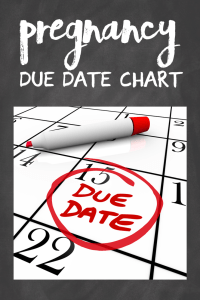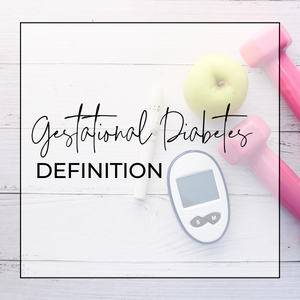 What is the first day of your last menstrual period? It’s a simple question. But watch out! If a medical professional is using it to calculate your due date, it might not give you an accurate answer.
What is the first day of your last menstrual period? It’s a simple question. But watch out! If a medical professional is using it to calculate your due date, it might not give you an accurate answer.
Calculating a due date isn’t always simple. Okay sure. If you have 28 day cycles and always ovulate on day 14, it’s pretty easy. Those handy little pregnancy due date calculator wheels will work great for you. Congrats! But for a lot of women, it’s not that simple. There are several reasons why a pregnancy due date chart might not work for you, and understanding how pregnancy due date charts work can help you use them effectively.
Some reasons your due date might differ are:
- Cycle length is longer than 28 days. Pregnancy due date charts are based on 28 day cycles. They take the first day of your last menstrual period and add 40 weeks to it to get your due date. Cycles that aren’t 28 days will have inaccurate due dates listed, which could lead to gestational age being over/under estimated.
- Ovulation day isn’t day 14. Central to the 28 day cycle assumption is that ovulation occurs on day 14-15. If it does, pregnancy charts that add 40 weeks to the first date of your last menstrual period should be accurate. However, there are many ovulatory-related disorders, PCOS being the most common one, that impact the length of the follicular phase. This means that ovulation doesn’t occur on day 14. The follicular phase is longer, which will length the overall cycle length as well. For example, a woman who ovulates on CD21 and has a 14 day luteal phase will have a cycle length of 35 days.
- Luteal phase length isn’t 14 days. There is typically less variability in luteal phases versus follicular phases. Most luteal phases will be between 12 and 16 days, with very little variation in each woman’s individual cycles. The luteal phase length will impact the overall cycle length though.
- Fertility treatments. If a women is undergoing fertility treatments, the most likely impact will be altering the ovulation date (and subsequent cycle length). In this case, it’s best to use the known ovulation date and add 38 weeks to it to get the pregnancy due date. During an IVF cycle, the egg retrieval date is considered ovulation.
If any of the above reasons apply to you, knowing how pregnancy due dates are calculated can help. Due dates are calculated by either adding 40 weeks to the first date of your last menstrual period or by adding 38 weeks to the date of ovulation (if known).
The easiest, and cheapest, way to determine the date of ovulation is to use a basal body thermometer and take your temperature every morning before you get out of bed. If you’re anything like me first thing in the morning and barely coherent, I recommend keeping post-it notes and a pen on the nightstand so you can write down your temp before you forget it. You can then either plot it out manually or enter it into a fertility app that is designed to track your cycles. These apps will analyze your cycles and temps to determine your date of ovulation.
Another good resource for learning more about your cycles is Toni Weschler’s Taking Charge of Your Fertility. This book gives some great information on reading your body’s signs that ovulation might be near.
I’ve put together an awesome, easy to use, pregnancy due date chart that includes both the last menstrual period and ovulation date. AND…I’ve just updated it to include both leap year and non-leap year versions. Grab it now!
Download Due Date Chart



